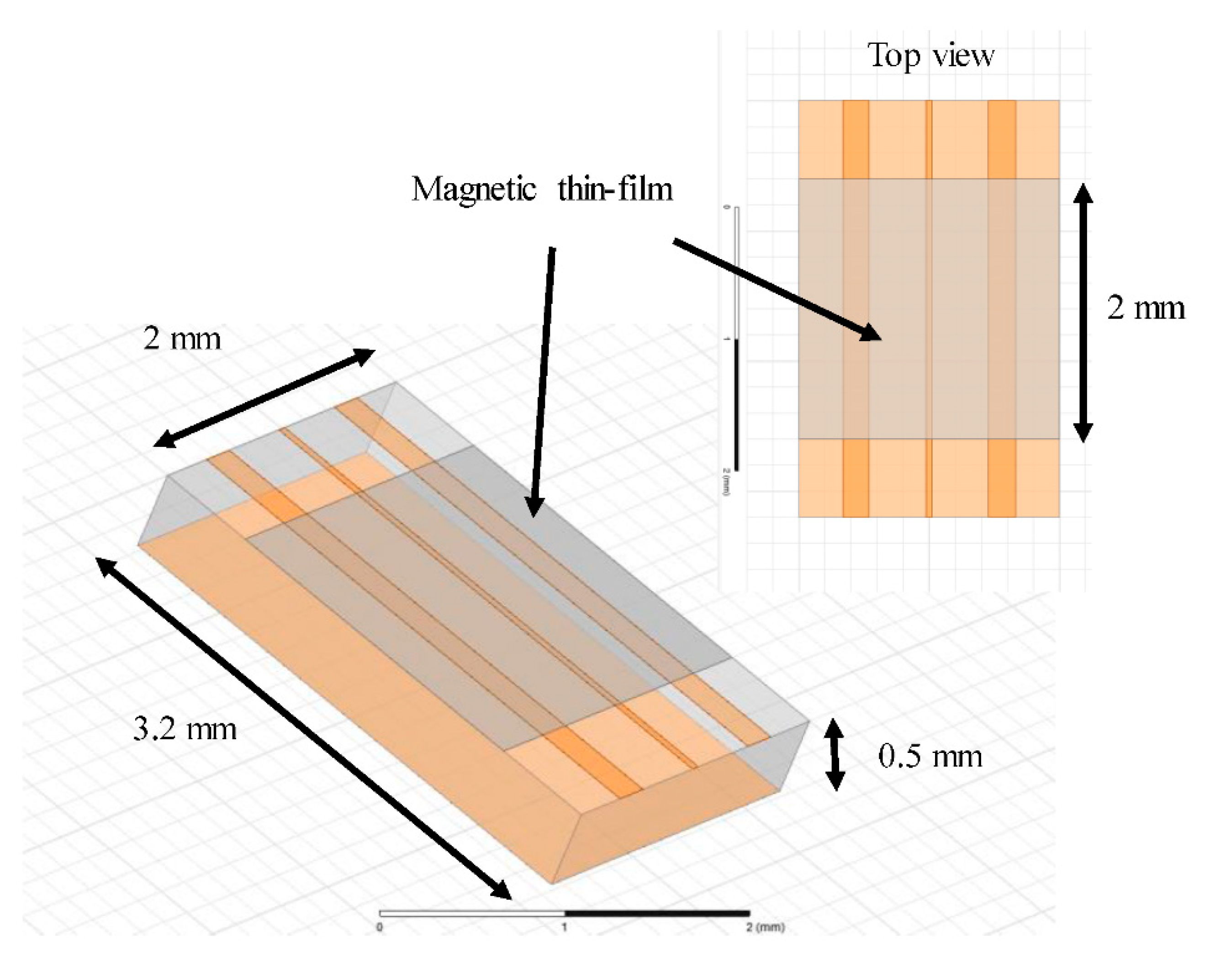Miniaturized Coplanar Waveguide for Nanostructured Magnetostrictive Multilayer Characterization †
Abstract
:1. Introduction
2. Set-Up Description
3. RF Simulation
4. Conclusions
Funding
Conflicts of Interest
References
- Tiercelin, N.; Talbi, A.; Preobrazhensky, V.; Pernod, P.; Mortet, V.; Haenen, K.; Soltani, A. Magnetoelectric effect near spin reorientation transition in giant magnetostrictive-aluminum nitride thin film structure. Appl. Phys. Lett. 2008, 93, 162902. [Google Scholar] [CrossRef]
- Zhou, H.; Talbi, A.; Tiercelin, N.; Bou Matar, O. Multilayer magnetostrictive structure based surface acoustic wave devices. Appl. Phys. Lett. 2014, 104, 114101. [Google Scholar] [CrossRef]
- Głowiński, H.; Schmidt, M.; Gościańska, I.; Ansermet, J.P.; Dubowik, J. Coplanar waveguide based ferromagnetic resonance in ultrathin film magnetic nanostructures: Impact of conducting layers. J. Appl. Phys. 2014, 116, 053901. [Google Scholar] [CrossRef]
- BenYoussef, J.; Tiercelin, N.; Petit, F.; Le Gall, H.; Preobrazhensky, V.; Pernod, P. Statics and dynamics in giant magnetostrictive TbxFe1−x/Fe0.6/Co0.4 multilayers for MEMS. IEEE Trans. Magn. 2002, 38, 2817–2819. [Google Scholar]




Publisher’s Note: MDPI stays neutral with regard to jurisdictional claims in published maps and institutional affiliations. |
© 2019 by the authors. licensee MDPI, Basel, Switzerland. This article is an open access article distributed under the terms and conditions of the Creative Commons Attribution (CC BY) license (https://creativecommons.org/licenses/by/4.0/).
Share and Cite
Fellahi, A.E.; Mazzamurro, A.; Gerbedoen, J.C.; Dusch, Y.; Matar, O.B.; Pernod, P.; Talbi, A.; Tiercelin, N. Miniaturized Coplanar Waveguide for Nanostructured Magnetostrictive Multilayer Characterization. Proceedings 2018, 2, 851. https://doi.org/10.3390/proceedings2130851
Fellahi AE, Mazzamurro A, Gerbedoen JC, Dusch Y, Matar OB, Pernod P, Talbi A, Tiercelin N. Miniaturized Coplanar Waveguide for Nanostructured Magnetostrictive Multilayer Characterization. Proceedings. 2018; 2(13):851. https://doi.org/10.3390/proceedings2130851
Chicago/Turabian StyleFellahi, Abdelhatif El, Aurélien Mazzamurro, Jean Claude Gerbedoen, Yannick Dusch, Olivier Bou Matar, Phillippe Pernod, Abdelkrim Talbi, and Nicolas Tiercelin. 2018. "Miniaturized Coplanar Waveguide for Nanostructured Magnetostrictive Multilayer Characterization" Proceedings 2, no. 13: 851. https://doi.org/10.3390/proceedings2130851



